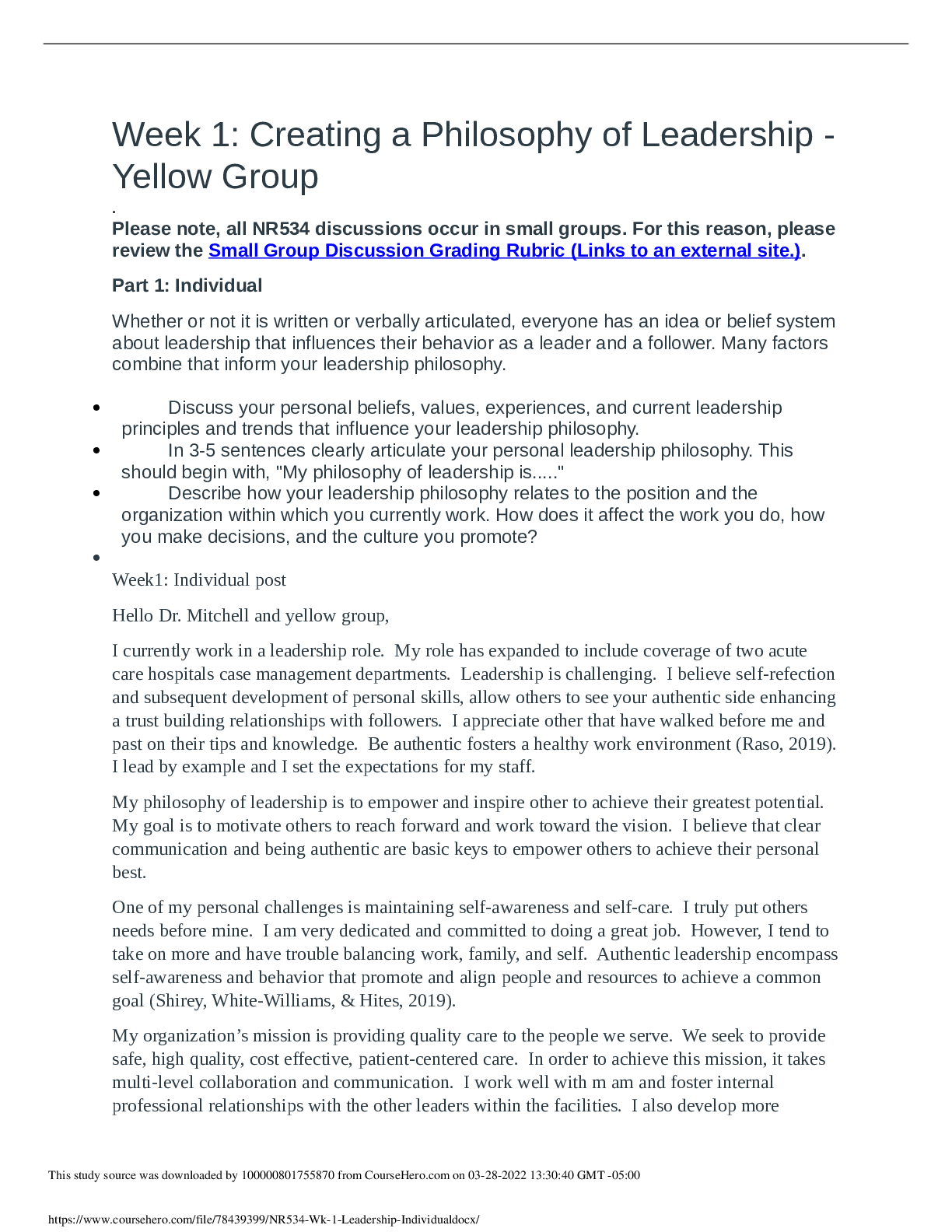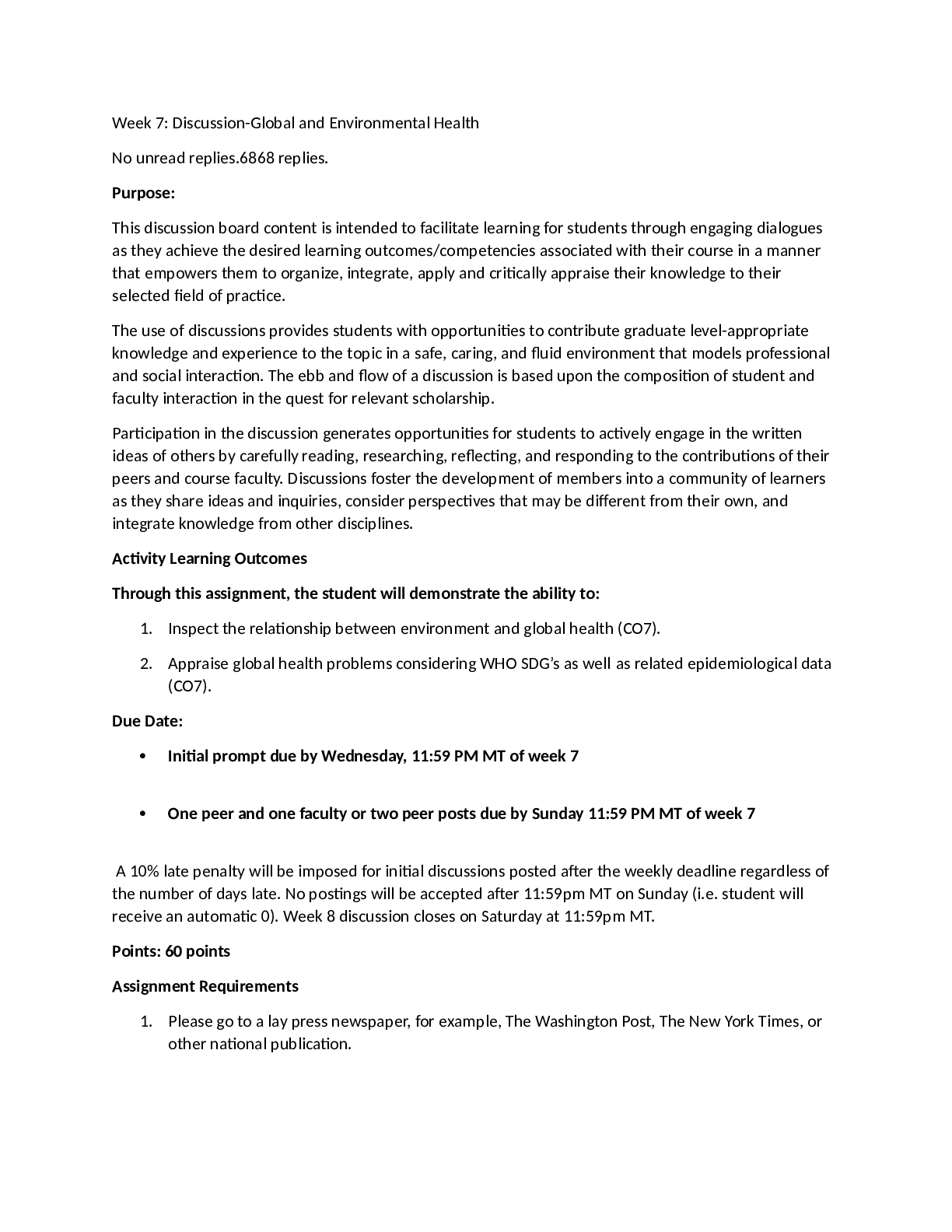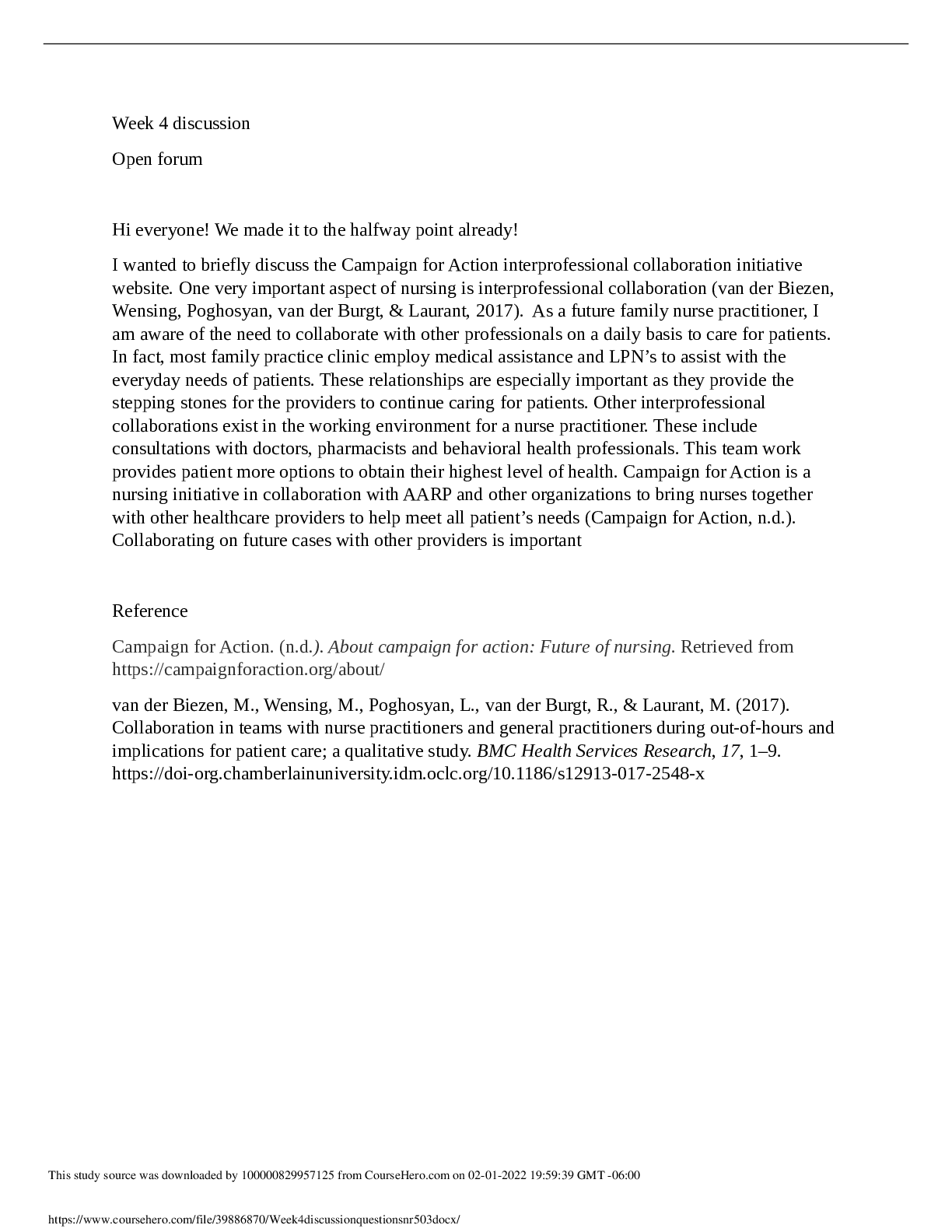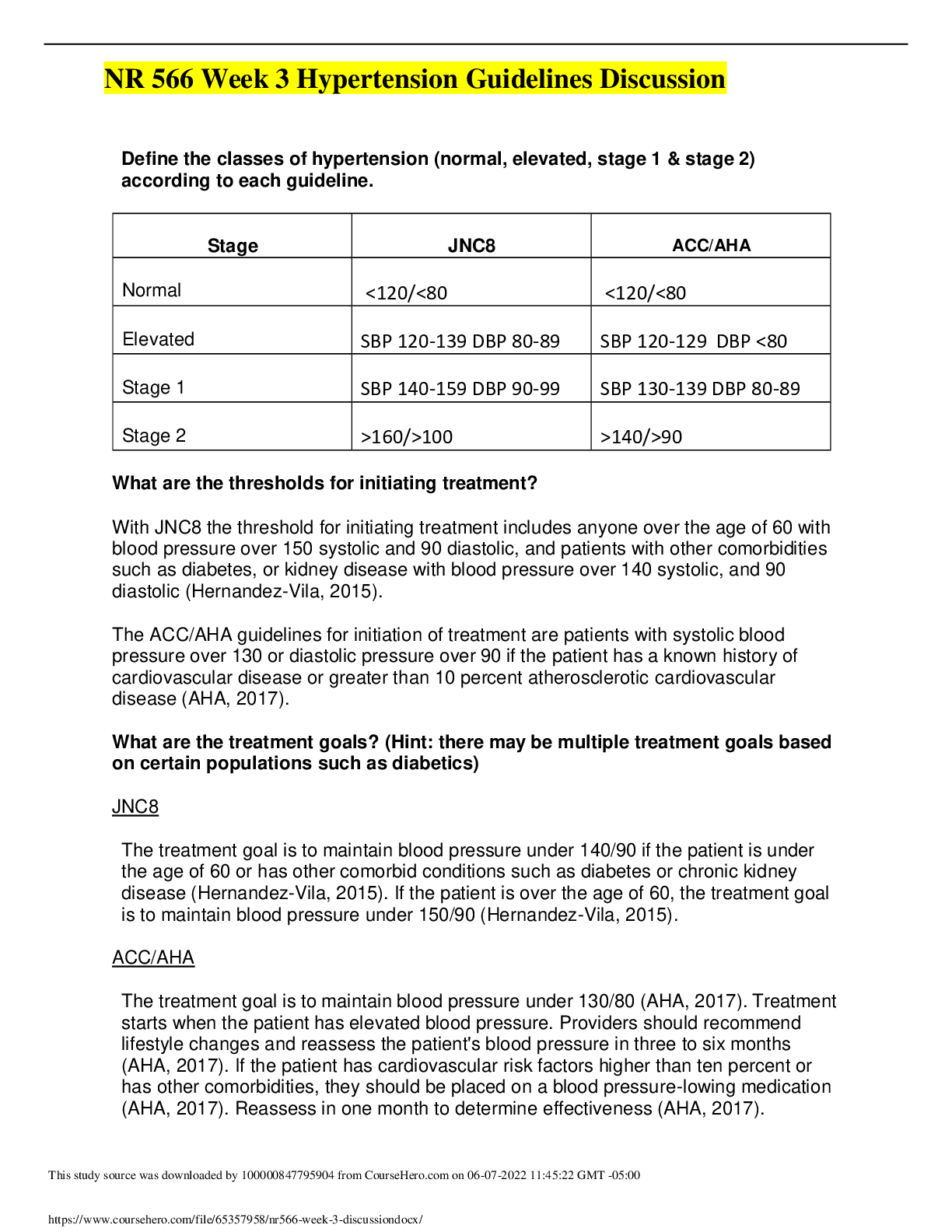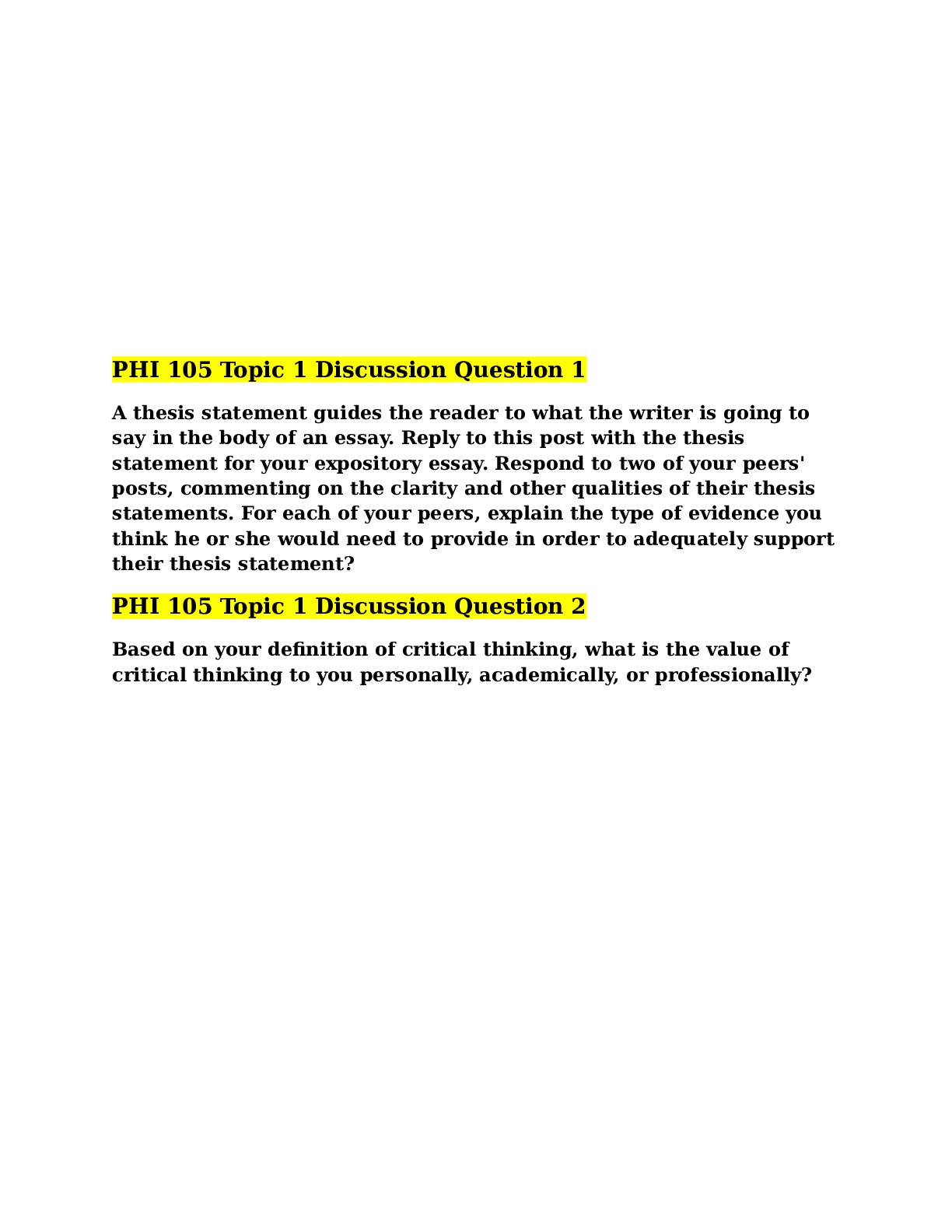*NURSING > DISCUSSION POST > NR-394 Week 7 Discussion: Presentation of Course Project: Part 3 (Graded) (All)
NR-394 Week 7 Discussion: Presentation of Course Project: Part 3 (Graded)
Document Content and Description Below
Week7Discusion:PresentationofCourse Project:Part3(Graded) **PleaseNote:ThisDiscussionislinkedtoyourWeek 6:CourseProjectPart3Assignment** Purpose The purpose of this discussion is to present the inf... ormation from Course Project Part 3. This discussion provides an opportunity for you to understand your classmates' viewpoints that may differ from your own and will enhance learning. CourseOutcomes The purpose of this discussion enables the student to meet the following course outcome: • CO 3: Describe culturally competent nursing care across the lifespan. (PO 4) ProjectOverview 1. There are three parts to the project. 2. There will be graded Project Check-ins that correlate to each part. 3. The topic selected in Part 1 will be the same one used in parts 2 and 3. 4. Review the table below for overview and due dates with each topic. 5. Carefully review the instructions, templates, and rubrics for each of the three parts as you begin this Course Project. 6. Contact your instructor with questions. Overview Points Due Date Part 1 completed Week 3 Part 2 completed Week 4 Part 3 completed Week 6 Discussion of Topics 100 Two posts (answer post and reply post) Sunday 11:59 p.m. MT at the end of Wee DueDate During the assigned week (Sunday the start of the assigned week through Sunday the end of the assigned week): • Posts in the discussion at least two times, and • Posts in the discussion on two different days PointsPossible 100 points Directions • Discussions are designed to promote dialogue between faculty and students, and students and their peers. In discussions students: o Demonstrate understanding of concepts for the week o Integrate outside scholarly sources when required o Engage in meaningful dialogue with classmates and/or instructor o Express opinions clearly and logically, in a professional manner • Use the rubric on this page as you compose your answers. • Best Practices include: o Participation early in the week is encouraged to stimulate meaningful discussion among classmates and instructor. o Enter the discussion often during the week to read and learn from posts. o Select different classmates for your reply each week. Hello class, Please see attached file to view my poster. My selected cultural population is Hmong. The Hmong originated from Southeast Asia with much of the immigrants being originally from Laos. California is currently noted to have the largest number of Hmong residents, followed by Minnesota and then Wisconsin. The Hmong population was selected due to their prevalence within the communities that I serve and their frequency of diabetes. The Hmong are at a higher risk for Type 2 diabetes and preventative education for health promotion is needed to reduce the number of newly diagnosed diabetes cases. Hmong along with other Asian American’s risk for diabetes is 60% higher than non-Hispanic Whites. Diabetes is a high priority health issue for Healthy People 2030 and reducing the number of new diagnosed cases is the objective to improve health. Diabetes within the Hmong population is growing due to the rising obesity epidemic because of their acquired sedentary Western lifestyle. Their risk for complications from diabetes, comorbidities and potential death is also higher given their lack of knowledge of western medicine, illiteracy, lack of formal education and complications with interpretation of western medicine. The Hmong have little experience with Western medicine causing difficulty in understanding medical care, procedures and often cause fear and distrust of medical staff. Because of this individualized, easily understood and effectively communicated preventative health education, explanation of medical procedures and diagnosis is needed for this patient population. The Hmong written language was not developed until the 1950’s resulting in many older people within the Hmong population being illiterate. When supplying patient educational material, it is imperative to know whether the patient can read or has a family member who can read and to make sure any Hmong written information given to them is in the correct dialect. It is equally important to make sure any Hmong interpreters used are proficient in the specific dialect of the Hmong patient otherwise communication may be limited or misunderstood. [Show More]
Last updated: 2 years ago
Preview 1 out of 3 pages

Buy this document to get the full access instantly
Instant Download Access after purchase
Buy NowInstant download
We Accept:

Reviews( 0 )
$12.00
Can't find what you want? Try our AI powered Search
Document information
Connected school, study & course
About the document
Uploaded On
Dec 02, 2022
Number of pages
3
Written in
Additional information
This document has been written for:
Uploaded
Dec 02, 2022
Downloads
0
Views
95


